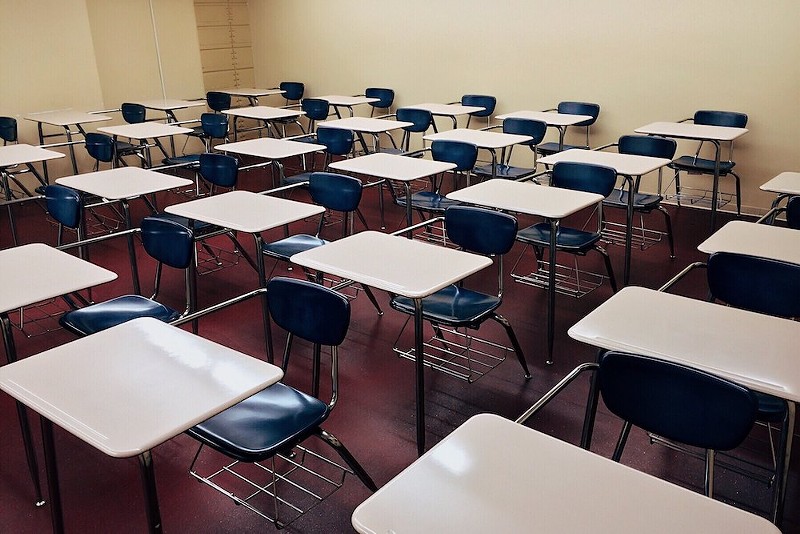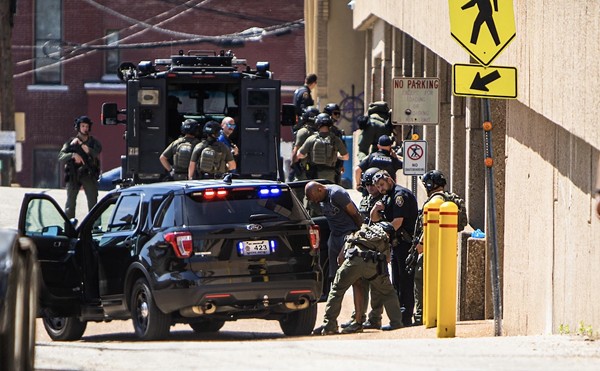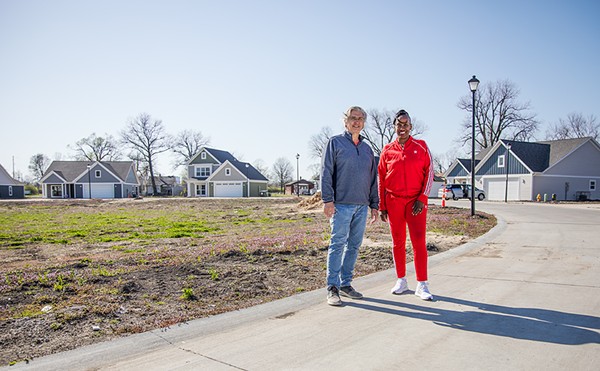A St. Louis Teacher Explains Why American Education Is Phony
Students are being failed by the wrong priorities and rampant inequality
[
{
"name": "GPT - Leaderboard - Inline - Content",
"component": "41932919",
"insertPoint": "5th",
"startingPoint": "3",
"requiredCountToDisplay": "3",
"maxInsertions": 100
}
]
“Game, my ass.” —J.D. Salinger
Tomorrow I go back in to teach another day on the path of a career that still keeps moving along after 25 years. When I see my fourth hour class, I’m going to be battling the same recent battle: Will you please put away your cell phones? In a few cases, I’m at the point where I need to collect the phones, send those addicted students to an administrator and get their parents involved. These things have little to do with the lesson I’m teaching about the anachronistic-but-still-relevant The Catcher in the Rye. J.D. Salinger’s book is a funny text to teach in 2022 if a teacher isn’t aware that many of his students don’t want to be identified as female or male (since Holden Caulfield is arguably damaged by rigid gender roles) and that the world has changed since 1951 — but not enough.
The fact that our public schools continue to be funded by property taxes has created an educational playing field so skewed that my students who live in St. Louis city have to get on a bus and ride back and forth to a community in the suburbs where the per-pupil expenditure is the highest in the state.
My city students have to be bussed to another town to get a “good education” with supposedly decent teaching, clean classrooms, top-notch technology and so on. I wish I could say my students from the city are welcome in their adoptive school community, but no matter what I hear from colleagues and our administration, facts are facts: There is a racial divide in St. Louis that harms everyone and disproportionately harms lower-income Black and brown students. That includes many of our students from the city who have to deal with teachers who come to the classroom with implicit racial bias.
I went into teaching to combat systemic racism and teach, naïve as I surely was, where I thought “good teachers” were needed. So I took my first job in Bridgeport, Connecticut, in 1992. During my time teaching in Bridgeport, it was one of the poorest and most dangerous cities in the U.S., comparable at the time to East St. Louis.
My first year’s salary was $26,000. I remember when I learned a college friend’s first bonus check out of college was $30,000. He was educated in a private school, prepped for Princeton, got in and went into investment banking. He and I were in the same classrooms with Wendy Kopp, founder of Teach for America.
I didn’t get involved with Ms. Kopp’s project, but I watched peers and later a few of my students parachute in for a few years of teaching “where good teachers were needed” before leaving to become doctors or lawyers or dentists.
Ruefully, I’ve said to anyone who has ever asked what I thought about Teach for America, that the last thing anyone should do is teach for America. Teach because you love nurturing children, teach because you love education, teach because deep down you know education is the answer.
Here’s what we don’t understand when we look at the skewed playing field of American education: The suburban school kids aren’t getting a meaningful education either. The point of our common schools is to produce good citizens, but quite the opposite transpires. Bussed-in students aren’t nurtured to gather the educational power they need to make political change while the students of wealth and privilege are blinded by a suburban myopia. In a majority white school like ours, diversity efforts fail on all fronts.
Teachers and administrators are so fixated on maintaining the top ranking of a Missouri school, they can’t see the racism of the lowered expectations for our city students who don’t take part in our honors and AP curriculum while being praised for Bs and being quiet in class. This turns King’s dictum — “There is no such thing as separate but equal” — on its head: Our shared classrooms also promote inequality.
And my suburban students are stressed to the point of anxiety disorders by their perceived need to get into status colleges. The AP students I used to teach are terrific at maximizing their utility in class, angling for the best grade, manipulating a system to make sure it rewards them so they can go on to perpetuate the same.
Some well-resourced parents get 504s or IEPs for their kids with the aid of a ready cadre of local doctors to ensure additional time on standardized tests, students take meds to maximize their performances on those tests, and it all takes its toll on a teenager’s well-being. It’s the nontrivial cost of doing American educational business. The other cost? Those “successful” students think and believe they earned their status and privilege as evidenced by their continuing academic success.
Until we change the way we fund schools, until we try to create a level playing field, our system of education will continue to fail all our students. This is as bad as it can get for a democracy because the students who need a real education about the foundation of their privilege can’t get it precisely because the system is set up to deprive them of any real perception of the disparities in the United States, any real learning.
They’ve got test scores and a November 1 deadline to perseverate about — in our school, the tension is so high our faculty has been advised never to ask students where they are applying to college or whether or not they’ve gotten in. A teacher might trigger a breakdown. And for students in the city who ride the bus to get a teacher like me? They know the set-up is phony. If you really want to know the truth.
At the RFT, we welcome well-reasoned essays on topics of local interest. Contact [email protected] if you've got something to say.







